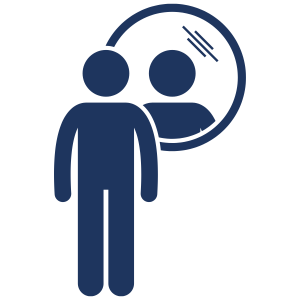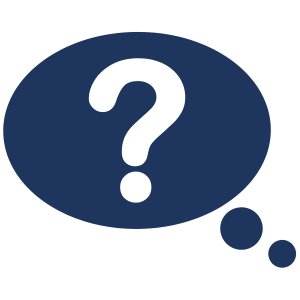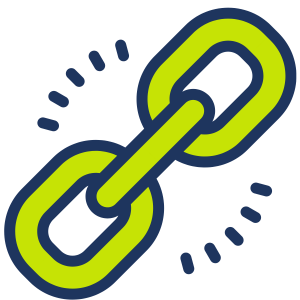
Focus Area 5: Intercultural Engagement
4. Understanding Unconscious/Implicit Bias
All of us have biases. The human brain has a built-in design function that instantaneously analyzes if someone is like us and therefore friendly, or unlike us and therefore possibly dangerous. All of that happens in an instant before we can even think about it. We make a snap judgement and instinctively act on it, without giving it a second thought.
Prejudice of any kind can be summed up as the result of believing that you are different from some other group or person and that their difference is a threat. Your prejudices will persist if you don’t have the ability to take another person’s perspective, or to feel their pain once you take their perspective, or to be open on an emotional level when you do feel the pain of others.
Since we’re all naturally biased, there’s no need to feel ashamed of it. But what would be a shame is to overlook what you can do to become aware of your unconscious bias and consciously work to offset or even eliminate it, especially if it is driving you to discriminate in any way toward others.
Because you work with young people, it is paramount that you
Unconscious bias gives birth to all kinds of stereotyping, prejudice, and discrimination; racism, sexism, transphobia, homophobia, Islamophobia, etc. And it is unconscious bias, never questioned, never challenged, that supported the rise and still sustains the reality of our institutional injustices.
Becoming aware of your unconscious bias is a necessary first step. To help wrap your head around the need for awareness as well as the difficult nature of this learning, here is a presentation by Dr. Mahzarin R. Banaji, a Harvard University psychologist, who has done significant research on prejudices that we carry below the threshold of consciousness. In this video, Dr. Banaji discusses unconscious prejudice and bias. Please excuse the video quality and really tune in to her words. You’ll find this both insightful and eye-opening:


Reflection Exercise:

This is the hard work that really needs to happen. By its very nature, unconscious, implicit bias happens so fast, so automatically, that it usually doesn’t even catch your attention in the moment. If you’re not alerted to the fact that it’s happening, how do you go about addressing it?
There are clues you can watch for. You just need to sensitize yourself to recognize them and call them out when you do spot them.
It helps to intentionally take the other’s perspective. In other words, put yourself in the shoes of the other person when you notice that you had a thought or feeling of judgment about them. Just notice and own it. As you experience their pain from that perspective, you will surely become aware about how causing anyone that kind of pain doesn’t fit your personal values. Intercultural engagement is, at its core, a deep ability to empathize.
With that awareness and experience of another’s pain, you can consciously choose to change your thinking and your actions. You can begin to eliminate the causes of your unconscious bias. You can become an advocate and speak up when you notice someone else operating out of prejudice.
Prejudice is inside all people. But most people tend to think of it as something only ‘bad people’ do. Denying or defending yourself as a person who is not prejudiced will only perpetuate prejudice. Pay attention to the clues in your own thoughts and actions as well as in the way others interact with you or around you.
MICROAGGRESSIONS
Implicit bias shows itself in everyday life, in tiny little words and phrases and in subtle body language cues. The term microaggressions is used to define those subtle comments and body language that can have a negative (prejudicial) impact, whether intended to or not.
On the surface, microaggressions may seem like a compliment or seem quite innocent and harmless. Nevertheless, they contain demeaning hidden messages.
You already know that people harbor unconscious biases and prejudices. When someone says or does something that seems completely innocent but clearly has an unintended consequence, it becomes clear that they were acting with bias. But the big problem is, they probably didn’t even know it.
Getting people to realize that they are acting in a biased manner is very hard because on a conscious level they typically see themselves as fair-minded folks who would never consciously discriminate. They are genuinely not aware of their biases. It feels like an attack on their self-image of being a good moral human being if they realize and acknowledge that they possess biased thoughts, attitudes and feelings that harm people who are different from them.
Research has identified three specific categories of microaggressions:
1. MICROASSAULTS: These are conscious, overt, and are communicated with the intent to cause harm. They are explicitly derogatory messages that discriminate by words or actions.
Example: name calling, discriminatory actions toward a person.
2. MICROINSULTS: These are often unconscious, can be verbal or nonverbal messages, and they subtly convey rudeness and insensitivity toward others who are different from you.
Example: back-handed compliments or subtle insults/snubs.
3. MICROINVALIDATIONS These are often unconscious messages that subtly exclude or negate the experiential realities of marginalized groups.
Example: invalidating a racial reality that a person of color experiences daily.
It’s not really important that you try to be aware of each type of microaggression. But it is really important that you train yourself to be aware of microaggressions in general – and specifically the detrimental impact they have.
A person on the receiving end of any sort of microaggression, whether due to ethnicity, gender identity, sexual orientation, religious affiliation, or any other social category or cultural dimension, may be reluctant to call it out. Because most microaggression originates from an unconscious level, the person who said or did it more often than not will deny doing anything wrong. That’s not because they are consciously trying to deceive by denying the wrong. It’s because they honestly believe they have done no wrong. Calling it out could be met with being labeled as “too sensitive,” “snowflake,” or “paranoid.”
Microaggressions are harmful and may contribute to:
- Mental health challenges
- Physical health challenges
- A hostile or invalidating work/program/office environment
- Sustaining and perpetuating stereotypes
- Reinforcing cues that signal acceptance of devaluing certain social group identities
- Supporting systemic inequities
Awareness is key to addressing microaggressions. Make a conscious effort to listen for and recognize microaggression in both verbal and nonverbal communication – your own and others’. Challenge yourself to notice the effect of microaggression when you see it – who speaks up, who doesn’t? How is the person on the receiving end harmed? Is it obvious or do they try to hide the hurt? Sensitize yourself to these slights. And talk about it. That will help to remove the stigma of unconscious bias. Diversity is meaningless if people are afraid to talk about it.

If you prefer to print this section of The Art & Science of Youth Work certificate course, click on the "Print Friendly" icon to select how you would like it to print. You can remove images and icons.
